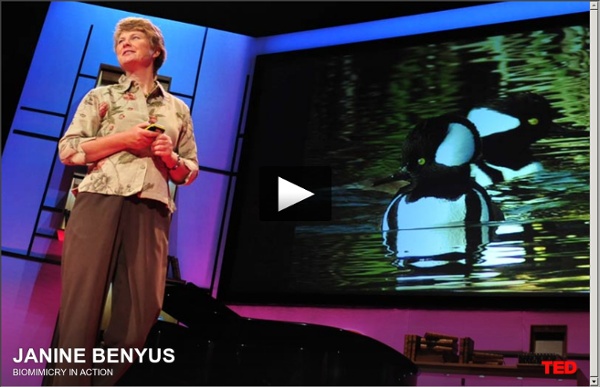



Biomimicry and e-Readers - Spark - CBC Player Jan 19, 2014 | 12:07Spark Net Neutrality Audio Spark Net Neutrality Jan 19, 2014 | 12:07Could your ISP intentionally slow down Netflix or throttle your Skype calls in order to make their own services more appealing? Stanford law professor Barbara van Shewick explains recent U.S. Net Neutrality news, and what it could mean for Canadians. Jan 19, 2014 | 9:46Spark The Bookless Library Audio Spark The Bookless Library Jan 19, 2014 | 9:46There's nothing special about a new library opening in Texas…unless it's a library with no books. Jan 19, 2014 | 8:59Spark The Internet of Insecure Things Audio Spark The Internet of Insecure Things Jan 19, 2014 | 8:59The promise of "smart" homes and cars brings Utopian visions of a seamlessly interconnected future. Jan 19, 2014 | 7:17Spark Not-Quite-Connected Audio Spark Not-Quite-Connected Jan 19, 2014 | 7:17Many household devices are already connected to the internet. Jan 16, 2014 | 32:53Spark Barbara van Shewick on Net Neutrality Audio
Reacciones de adición, sustitución y eliminación Study claims meat creates half of all greenhouse gases - Climate Change - Environment In a paper published by a respected US thinktank, the Worldwatch Institute, two World Bank environmental advisers claim that instead of 18 per cent of global emissions being caused by meat, the true figure is 51 per cent. They claim that United Nation's figures have severely underestimated the greenhouse gases caused by tens of billions of cattle, sheep, pigs, poultry and other animals in three main areas: methane, land use and respiration. Their findings – which are likely to prompt fierce debate among academics – come amid increasing from climate change experts calls for people to eat less meat. In the 19-page report, Robert Goodland, a former lead environmental adviser to the World Bank, and Jeff Anhang, a current adviser, suggest that domesticated animals cause 32 billion tons of carbon dioxide equivalent (CO2e), more than the combined impact of industry and energy. The accepted figure is 18 per cent, taken from a landmark UN report in 2006, Livestock's Long Shadow.
Mecanismos de reacción Dogs Use Subway, Cat Takes Bus and Other Adventures in Animal Intelligence Jan 7, 2012 5:00pm Nature’s Edge Notebook #12 – Observation, Analysis, Reflection, New Questions Stray dogs figure out how to use Moscow’s subway system to get downtown to neighborhoods where the food is better. For years, a house cat in England takes the public bus to get around town, unbeknownst to its owner. A jungle leopard in India, needing to cross a swollen river with its cub, gets a man to ferry her and her cub across in his canoe. Dolphins at a dolphin show in Hawaii instantly figure out a mistake their trainers have made and cover for them pretty well, preventing embarrassment all around. The wild ocean cousins of those “tame” show dolphins have a long-standing partnership with fishermen along the coasts of both Brazil and Bengal that means more fish for all. In Western Australia’s Shark Bay, wild dolphins being studied by scientists from Harvard, appear themselves to be studying the humans — including this reporter. Sure enough, before long, not hard to find at all, there she was…
Nomenclatura de Compuestos Orgánicos DNA from the Beginning - An animated primer of 75 experiments that made modern genetics. Estructura y enlaces químicos Chemistry 51A Organic Chemistry - Fall 2009 - Download free content from UC Irvine Uniones químicas covalentes - Química Las uniones covalentes, ocurren entre elementos, con alto nivel de electronegatividad, gráficamente, a la derecha en la tabla periódica, este tipo de elementos, se encuentran cerca de cumplir, la regla del octeto. Recordemos, que en la unión Iónica, uno de los elementos, se encuentra dispuesto a perder electrones, para cumplir la regla del octeto, cediéndoselos a otro que esté más cerca de cumplirla, ganándolos. En el caso de las uniones covalentes, ambos elementos de una unión, están queriendo ganar electrones, para llegar a 8 en su último nivel de energía, lo que sucede entonces, es que los elementos comparten electrones, para lograr la estabilidad. Por ejemplo, el Óxido de Cloro (Cl2O), se trata de la unión de un átomo de Oxigeno, (que posee 6 electrones) con 2 átomos de Cloro, (cada uno posee 7 electrones), cada átomos de Cloro comparte, con el átomo de Oxigeno, un electrón, logrando así que cada uno de los átomos, logre una totalidad de 8 electrones.
Química Orgánica: introducción - Química orgánica La Química Orgánica se centra particularmente en la química del carbono. Es una rama de la química, por lo tanto, todas las leyes y procedimientos que se aplican en la química general también son aplicables en la química orgánica. Sin embargo, hay tres hechos destacables hacen que se estudie particularmente la química orgánica. Uno de ellos es que existen millones de compuestos que contienen átomos de carbono. Otro aspecto importante es que todos los seres vivos contienen moléculas compuestas por átomos de carbono. En tercer lugar, los compuestos del carbono presentan propiedades diferentes de los compuestos inorgánicos. A pesar de la gran cantidad de compuestos orgánicos que existen, contamos con una gran herramienta llamada “Teoría estructural”. Los Compuestos Orgánicos se dividen en tres grandes grupos: Los Hidrocarburos, los Compuestos Oxigenados y los Compuestos Nitrogenados. Un concepto muy importante dentro de la Teoría estructural, es el concepto de series homólogas.